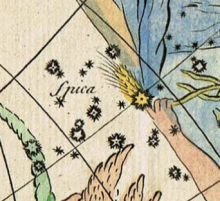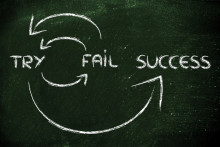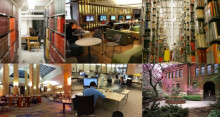Stories and reflections from U-M Library assessment practitioners.
Tiny Studies

Posts in Tiny Studies
Showing 51 - 60 of 63 items

- Linda Kendall Knox
“Learning from Advanced Student Staff Experiences” was a University of Michigan Library study conducted in 2017, integrating methodologies of user-centered design and critical librarianship.

- Paul F Grochowski
In this study, engineering librarians Leena Lalwani, Jamie Niehof, and Paul Grochowski sought to learn from graduate students in the College of Engineering (CoE) how these students could benefit from more instruction on U-M Library resources.

- Emily Capellari
In the second of two posts, Informationists from the Taubman Health Sciences Library share their research project to improve library integration within the U-M School of Nursing curriculum. Using a mixed methods approach, they are investigating undergraduate student information seeking needs and behaviors.

- Kate Saylor
In two blog posts, Informationists from the Taubman Health Sciences Library share their research project to improve library integration within the U-M School of Nursing curriculum. Using a mixed methods approach, they are investigating undergraduate student information seeking needs and behaviors.

- Alex Deeke
Have you ever attended a workshop and promptly forgot most of what you learned a few days later? Given that library staff teach hundreds of library instruction sessions each semester through training workshops, course-integrated sessions, campus workshops, etc., this is an issue that is probably affecting those who attend our instruction sessions as well. Librarians explored a potential solution to this problem by testing an implementation of "Learning Boosters."

- Karen A Reiman-Sendi
Ask a Librarian email and instant messaging (IM) service providers targeted current users of our virtual reference services during 2016-2017, to gather feedback about our online research and reference service. We wanted to know more about users' motivation for seeking help via email and via IM, as well as users' satisfaction with their online interactions. Additionally, we were interested in gathering users' ideas for future IM service enhancements.

- Rachel Vacek
Like many academic research libraries, the University of Michigan Library has a promotion process for its librarians. And, like many libraries, the policies need to be reviewed on occasion. The Promotion and Appointment of Librarians (PAL) Task Force was charged by the Librarians’ Forum with reviewing our promotion process and making recommendations to better align what we do with the goals of both individuals and the Library. This Task Force utilized various qualitative and quantitative research methods to get the best data (described below).

- Denise Leyton
There are many ways to record and analyze what is happening in the University of Michigan libraries over time. The more we understand how users are engaging with our spaces, the more we can do to meet their needs. But how do you get a handle on such a big question (library space use)? What data do you collect and how do you break it down?

- Pam MacKintosh
The U-M Shapiro Undergraduate Library (UGL) collection serves the course-related and extracurricular information needs of U-M undergraduate students. This collection encourages students to explore new ideas, gain research skills, and become lifelong learners. How can we tailor this small collection (approximately 175,000 volumes) to meet their current needs?

- Ben Howell
Maybe you’ve heard of or lived with a roommate who never washed the dishes, who talked loudly on the phone late into the night or who stiffed you on rent. Not fun. Bias in our research isn’t fun either. It distorts the nature of the data we collect, analyze and share.